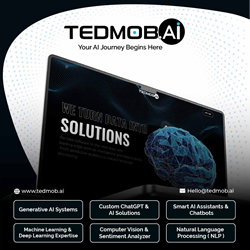The modern IT network infrastructure model is witnessing rapid changes. With the deployment of 5G network architecture gaining momentum, business organizations cannot afford to overlook the importance of customer experience, increased adoption of advanced technologies such as artificial intelligence (AI) and robotic process automation (RPA) and migration to cloud from their IT service management (ITSM) strategy.
Every IT infrastructure must safeguard processes and solutions against various threats and malfunction, ensuring the whole system operates as one unit. Maintaining the required computing speed, reliability, visibility, and control of the devices connected to the network and overall productivity is crucial for any business. Management and monitoring of wired, wireless, and guest network logins, Wi-Fi protected (WPA) networks, encryption and segregation of traffic, with dedicated virtual local area networks (VLANs), and blocked inter-VLAN traffic and firewalls are all critical in protecting the infrastructure. The absence of any of these processes will risk privacy, security, or compliance breach in organizations. Importantly, security levels must complement the business needs of customers at all times. Although putting a finger on the perfect IT infrastructure for organizations may be next to impossible – given the pace of technological shifts taking place today – there are some key areas where IT planners can turn their focus on.
Technology modernization enabled by Cloud
Experts predict more cloud options will replace legacy solutions by offering low costs and high benefit products and services. Cloud management platforms, that help organizations navigate multiple cloud environments, will continue to witness demand. However, they also stress the importance of carefully assessing the use of new tools before committing to it just for the sake of embracing new technologies.
Recent Allied Market Research findings reveal that the cloud services market size was valued at $264.80 billion in 2019 and is projected to reach $927.51 billion by 2027, growing at a CAGR of 16.4% from 2020 to 2027. Moreover, cloud services are gaining popularity through the launch of low code/no-code solutions that enable experienced developers to accelerate deployment and reduce IT backlogs. Industry experts say the low-code/no-code approach can provide enterprises the ability to speed time-to-market rate and expand engineering capabilities beyond IT. Small wonder that the worldwide low-code development technologies market is projected to reach $13.8 billion in 2021, an increase of 22.6% from 2020, according to the latest forecast by Gartner, Inc.
However, the leap to cloud-native technologies can be daunting. It will require the collaboration of system administrators and developers to identify patterns and provide recommendations on how to bring cloud-native transformation across the IT setup.
Unknown security threats
With the growth in broadband connectivity as well as 5G rollouts, the fight against cyberattacks such as DDoS has become critical. Well-planned DDoS attacks can render massive damage to individual and large-scale connectivity and service availability, resulting in loss of capital in restoration or even in ransom demands from malicious actors.
Nokia Deepfield’s global DDoS traffic analysis, that studied service provider network traffic encompassing thousands of routers on the internet between January 2020 and May 2021, revealed over 100% increase in daily DDoS peak traffic due to rapidly growing number of open and insecure internet services and IoT devices.
“It is equally important for every participant in the network security ecosystem – end-users, vendors, service providers, cloud builders, regulators, and governments – to understand the dangers DDoS poses to the availability of internet content, applications, and critical connectivity services,” said Dr. Craig Labovitz, CTO, Nokia Deepfield.
Accurate DDoS detection and cost-effective, automated mitigation are becoming paramount requirements for service providers, cloud builders, and network operators to protect their network infrastructures, services, and users.
Organizations may opt for cross-domain solutions that enable secure sharing and access to important operational data between security levels across stakeholder organizations, providing enhanced security and functionality for mission-critical operations.
Given increasing risks, companies would do well to consider evolving to a “zero trust” security approach that continuously validates the conditions for connection between users, data, and resources to determine authorization and access needs.
Relook at Infrastructure
Most recently, edge cloud platform Fastly confirmed that a software bug was behind the outage that brought down its services disrupting many companies and government websites such as Amazon, Reddit, and even the UK government.
The incident calls for rethinking the infrastructure designs to prevent future incidents. Ivo Ivanov, CEO of DE-CIX International, an internet exchange company, commented that the event highlighted "the obvious need for further infrastructure".
Given the volume of data exchanges that happens over the internet today, setting up Internet Exchange Points (IXPs) could be an important factor as the solution to end such sudden outages. IXPs have three main benefits – lower latency, cost efficiency, and control-of-traffic sovereignty. IXPs are essentially layer 2 switches used to route traffic to keep them local instead of sending that traffic to the nearest major Internet node in far-off locations and back. With the advent of 5G and the Internet of Things (IoT), having IXPs can contribute to reducing latency and fast delivery of content to end-users. IXPs also reduce an ISP's traffic that is delivered via their upstream transit providers, thereby reducing the average per-bit delivery cost of their service. IXPs play a crucial role in reducing the cost of transit connections over the Internet. Oganization IT set up that is compatible with IXPs will have the ability to deliver their goods efficiently for an enhanced digital experience of users in businesses and organizations alike.
Sustainable IT infrastructure
Awareness about the environmental impact of IT is gradually gaining momentum. IT carbon footprint in sectors, such as banking and consumer products, show the highest levels of awareness (52% and 51% respectively), according to recent findings. While the industrial manufacturing sector showed the lowest awareness (28%), only 34% know that the production of mobiles and laptops has a higher carbon footprint than the use of these devices over their lifetime.
As sustainability becomes a consensus goal worldwide to slow climate change, green energy is going to be crucial for ICT in 2020-30.
For instance, both European and Chinese tech companies are using advanced technologies to assist their supply chain and customers reduce carbon footprints and embrace renewable energy.
For this matter, Chinese tech giant Huawei Technologies Co has rolled out a zero-carbon network solution to help telecom operators accelerate green and sustainable development.
"A zero-carbon network has become an important strategic goal for leading operators worldwide”, says Zhou Taoyuan, president of digital power product line at Huawei.
Similarly, Nokia is using the Science Based Targets initiative (SBTi) to tackle its carbon footprint and has adopted ambitious targets to incorporate close to 100% of the company’s current product portfolio, including emissions from both logistics and assembly factories within its supply chain, as well as emissions from Nokia’s operations.
Governments around the world are asking organizations to monitor and measure their energy usage at a granular level. Organizations can adopt green IT initiatives to add value to their business through savings by lower energy usage, etc.
In today’s dynamic world of technology, an efficient IT strategy is essential to keep any business going.
In addition, the plethora of technology solutions on offer can complicate the process of a strategic IT approach. However, solid IT planning must incorporate well-measured and analysed options that are focused on reducing communication barriers in an organization’s structure and establish cross-functional and interpersonal communications for superior operations.











